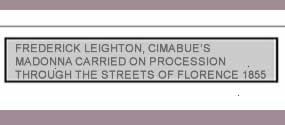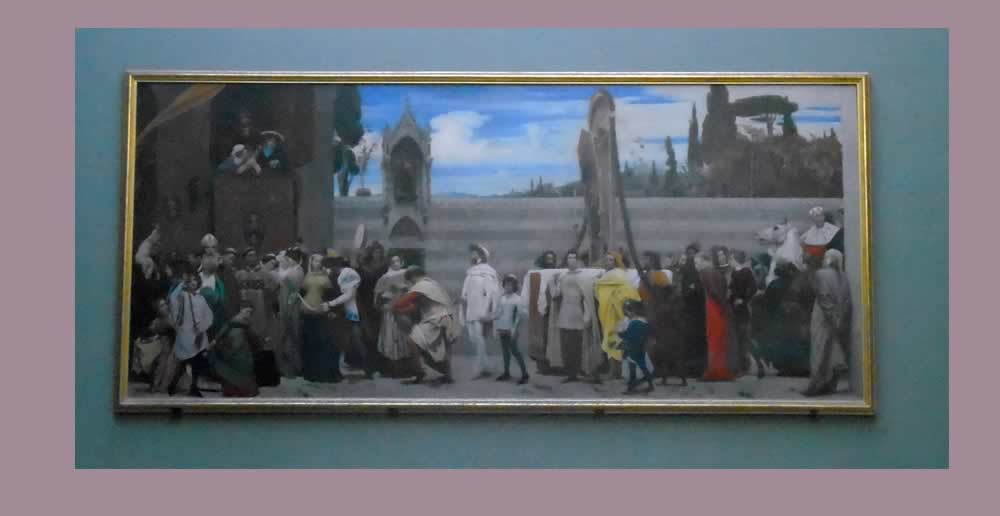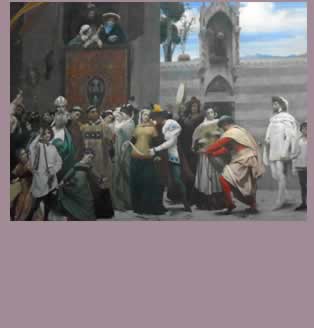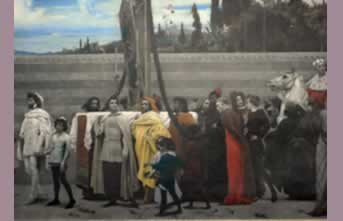 |
 |
 |
 |
|||
 |
||||||
 |
 |
 |
||||
 |
||||||
Walk in through the main entrance of the National Gallery, go up the stairs and look back. There is this remarkable painting on loan from the Royal Collection, having been originally bought by the then Prince of Wales at the 1855 Royal Academy exhibition. Before its present accessibility, I was told to see it at first hand for my doctoral thesis and was refused by the Curator pof the Royal Collection in that I was not of sufficient academic statuture. Despite long standing resentment and several attempts to achieve revenge, I do admire its scale and ambition. Once he had settled in London and caught a whiff of the subject free painting, Leighton never really showed such narrative invention again. The canvas is elegantly poised on a cusp between his early art education in Frankfurt under Steilel, and a perios of work in Paris. John Gage thought it would make a fitting candidate for the Penguin Art in Context series edited by his pals, Hugh Honour and John Fleming. But the series came to an end and my chance didn't materialise. In studying mid-century painting in France and England I identified an impulse to the processional which really interested me - a corresponding flattening of form and subsequent orchestration of verticals in musical rhythm. Edward Armitage worked with Delaroche on the Paris Hemicycles, and also worked on the ill-fated decorations of the Houses of Parliament in the 1840's. I made the trip to St John the Evangelist islington to see Armitage's Christ and the Apostles installed in the apse in the late 1850's. They had been lost but, I found one reference, may have been whitewashed over. That the dealer Gambart sent him to the Crimea during the War with Russia, for pictorial material adds to his statuire. Armitage's sketches can be seen in the Illustrated London News and The Graphic. Leighton's procession is a remarkably mature work for a 25 year old ingenue, influenced by Moritz von Schwind , and informed by many consistently accomplished pencil and oil studies. It celebrates the public recognition of major works of art, a self fulfilling prophesy when the Prince of Wales bought the picture. Edward was not known at any period of his life for aesthetic sensitivity, and I suspected some previous unrecorded contact between artist and patron eased the transaction. A caricature of Leighton three years after the sale of Cimabue's Madonna shows him with unmistakable emblems of Freemasonry which could have been the link with Edward. The Librarian of the Senior Freemasonic Lodge in London huffily rejected the very thought. It was my fault in drawing attention to the rolled up trouser leg in the caricature.
|